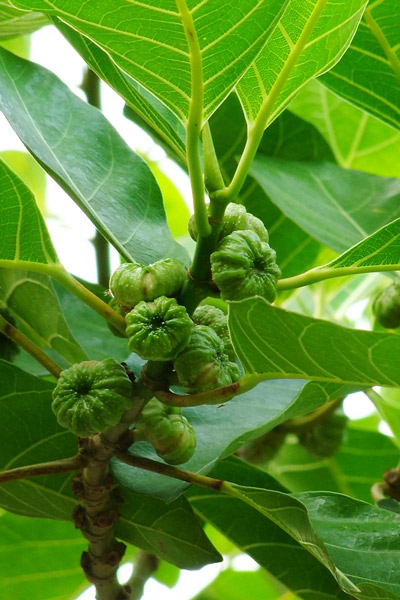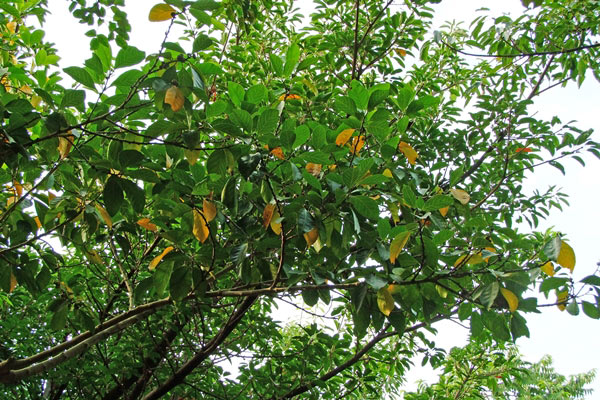Ficus septica
The angular fruit fig is an evergreen plant with color changing leaves. The leaves do not fall off in large quantities in a short period of time, but they turn golden yellow before falling, displaying beautiful color changes. The process from new leaves to yellow leaves takes about 14 weeks, and it is estimated that there are 3 to 4 leaf replacement cycles per year.
The leaves of the angular fruit fig are large and smooth. In the past, before plastic bags became widespread, these leaves were widely used as a natural material for wrapping food, especially by vendors for wrapping meat. This usage not only demonstrates people's flexible use of natural resources but also reflects the wisdom of traditional life.
In addition, the surface of the fruits produced by the angular fruit fig has prominent ridges, which is where its Chinese name comes from. These fruits usually grow individually or in pairs and have a unique appearance and ornamental value. In nature, these fruits may serve as an important food source for certain animals and play an important role in the ecosystem.
The angular fruit fig is naturally distributed in Southeast Asian regions such as Papua New Guinea, Sumatra, Java, Borneo, and the Philippines, as well as in tropical areas including Taiwan, the Ryukyu Islands, and even the Solomon Islands and northeastern Australia in Oceania. It primarily grows in tropical regions. In Taiwan, it is commonly found in warm and humid environments in secondary forests on low mountains, river valleys, or coastal forests. It can adapt to diverse environments and is an excellent greening species for lowland landscaping. In the museum it is primarily planted in the Coral Atoll Area, Monsoon Rain Forest Area, Littoral Forest Area, and Northern Lowland Area of the Botanical Garden. However, since birds enjoy eating its fruits, seedlings from natural seed dispersal can often be seen in the outdoor gardens of the museum area.

